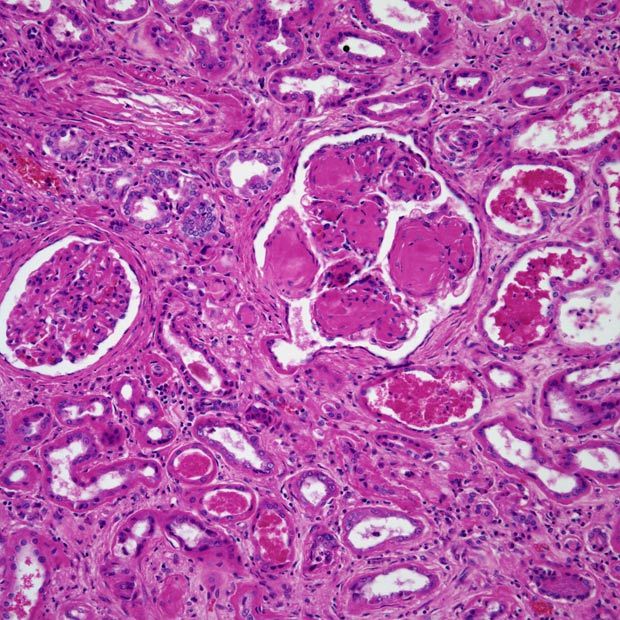Inobrodib Receives FDA Orphan Drug Designation in Multiple Myeloma
Investigators anticipate sharing data from a phase 1/2a trial evaluating inobrodib on its own and in combination with pomalidomide and dexamethasone among patients with multiple myeloma at a future medical conference.
The FDA previously granted fast track designation to inobrodib for the treatment of patients with relapsed or refractory multiple myeloma in June 2023.

The FDA has granted orphan drug designation to inobrodib (CCS1477) as a treatment for patients with multiple myeloma, according to a press release from CellCentric.1
Developers designed the orally available, first-in-class inobrodib for use at home without any need for intensive monitoring. The agent is intended for use among patients who have progressed on other treatments and can be administered as a supplement for other standard-of-care therapies.
Inobrodib is currently under evaluation as part of a phase 1/2a trial among patients with multiple myeloma and other hematologic cancers including non-Hodgkin lymphoma, acute myeloid leukemia (AML), and higher risk myelodysplastic syndrome (MDS). Investigators expect to have a readout of data from an expansion cohort at the 2023 American Society of Hematology (ASH) Annual Meeting, which will include findings on the efficacy of inobrodib alone and in combination with pomalidomide (Pomalyst) and dexamethasone among those with multiple myeloma.
“Orphan drug designation for inobrodib is an important milestone in our journey to develop an additional therapeutic option for patients with multiple myeloma,” Tomasz Knurowski, chief medical officer at CellCentric, said in the press release. “We look forward to providing an update on our clinical data by the end of the year, which will help inform the next stage of development of inobrodib.”
According to its developers, inobrodib inhibits p300/CBP, which affects the expression of cancer driving genes, including MYC and IRF4, that play a key role in progressing hematological malignancies.2 By targeting the bromodomain pockets of p300 and CBP, inobrodib is believed to influence androgen receptor expression that may have an effect on the development of late-stage prostate cancer.
Investigators of the open-label phase 1/2a trial are evaluating inobrodib monotherapy across cohorts of patients with non-Hodgkin lymphoma or multiple myeloma, higher risk MDS or AML, and those with non-Hodgkin lymphoma or peripheral T-cell lymphoma. In the combination therapy cohorts, regimens include inobrodib plus pomalidomide and dexamethasone in patients with multiple myeloma and inobrodib plus azacitidine (Vidaza) and venetoclax (Venclexta) in those with AML or higher risk MDS.
Incidence of treatment-related adverse effects and laboratory abnormalities are the primary end points of the trial. Secondary end points include the response rate, duration of response, maximum observed plasma concentration, and the area under the plasma concentration time curve of inobrodib.
Patients 18 years and older with a confirmed diagnosis of a relapsed or refractory hematological malignancy are eligible to enroll on the trial. Having an ECOG performance status of 0 to 2, receiving prior standard therapy, and having adequate organ function are also requirements for enrollment.
The FDA previously granted fast track designation to inobrodib for the treatment of patients with relapsed or refractory multiple myeloma in June 2023.3 Specifically, the indication is for patients who have received at least 4 prior lines of therapy, including treatment with a proteasome inhibitor, an immunomodulatory agent, and anti-CD38 monoclonal antibody.
“This fast track designation underlines the potential of inobrodib to positively impact the lives of many people living with cancer, who could benefit from the ability to take the treatment at home,” Debbie Haynes, chief operating officer at CellCentric, said in a press release at the time of the fast track designation.
References
- CellCentric granted FDA orphan drug designation for inobrodib (CCS1477) for the treatment of multiple myeloma. News release. CellCentric. June 29, 2023. Accessed June 29, 2023. https://shorturl.at/fnDN5
- Inobrodib: a first in class oral anti-cancer drug. CellCentric. Accessed June 29, 2023. bit.ly/3N7NoVd
- CellCentric receives FDA fast track designation for inobrodib for the treatment of patients with relapsed refractory multiple myeloma. News release. CellCentric. June 13, 2023. Accessed June 29, 2023. bit.ly/43Vr481
Newsletter
Stay up to date on recent advances in the multidisciplinary approach to cancer.